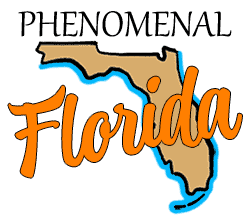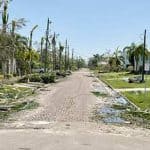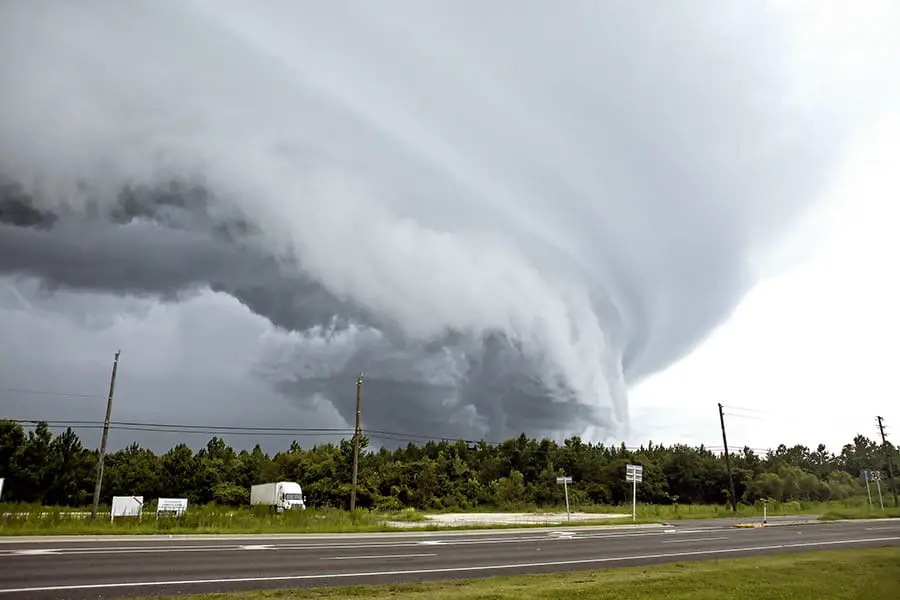
Florida’s weather is mostly sunny and warm, but occasionally it likes to venture into the extreme. Heavy thunderstorms, microbursts, and of course, hurricanes are known to impact the state from time to time. But does Florida get tornadoes?
Florida does get tornadoes. In fact, in terms of tornadoes per 10,000 square miles, Florida has more tornadoes than any other state. Tornadoes are born from thunderstorms. During Florida’s storm season, thunderstorms are pretty common across the state, making it a fertile place for tornadoes.
So why exactly does Florida get so many tornadoes? Are they more common in one place versus another? What time of year has the most tornadoes, and do they ever get to be as bad as the massive EF5 storms that occasionally hit Tornado Alley? Continue reading to learn more about this Florida weather event.
Twisters in the Sunshine State
According to the National Weather Service (NWS), a tornado is “a violently rotating column of air extending from the base of a thunderstorm down to the ground.” This rather bland definition does not fully convey the raw power of a tornado, these storms can spawn with little to no warning and, in severe cases, can have winds of greater than 250 miles per hour. They are widely known for leaving broad swathes of destruction in their wake.
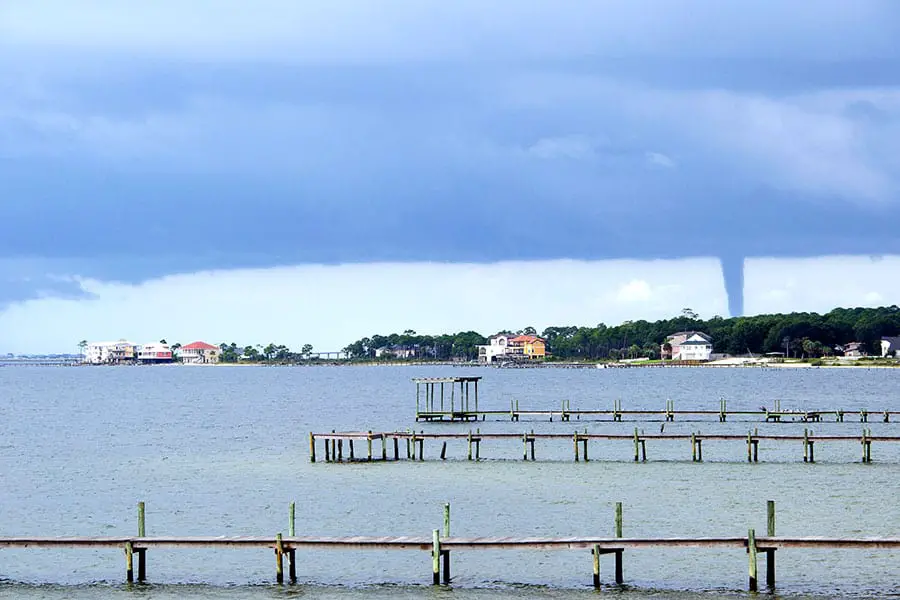
How do tornadoes form? The short explanation is that a mass of warm, humid air encounters a mass of cool, dry air. The warm air rises through the cool air, disturbing the atmosphere and frequently causing thunderstorms. As the warm air rises, it creates a powerful updraft.
If wind conditions are favorable, the updraft begins to rotate. This rotating updraft is called a mesocyclone. The spinning updraft continues to feed the storm, developing into a supercell thunderstorm. Some, but not all, supercell storms will spawn tornadoes.
Why Does Florida get so Many Tornadoes?
During the summer months, the overarching weather patterns favor the development of large thunderstorms in Florida: there is ample heat and moisture to generate large masses of warm, rising air. If those air masses encounter cooler air masses, the energetic mix can quickly develop into a thunderstorm. If the thunderstorm becomes severe, it can generate a tornado, as yearly data can attest.
What Part of Florida Gets Tornadoes?
The entire state of Florida is subject to the occasional tornado for two main reasons. First, the previously mentioned thunderstorms can strike anywhere in the state, whether you’re in Key West, Jacksonville, or Panama City. Second, Florida often finds itself in the path of tropical storms and hurricanes, which tend to generate bands of severe weather that include thunderstorms and tornadoes.
That said, some places experience more tornadoes than others. For example, the region of the state between the Tampa Bay area and Fort Myers is subject to frequent storms and sees more tornadoes than areas further inland. Similarly, the western panhandle of the state tends to experience more tornadoes. Some areas of the Atlantic coast experience frequent storms as well.
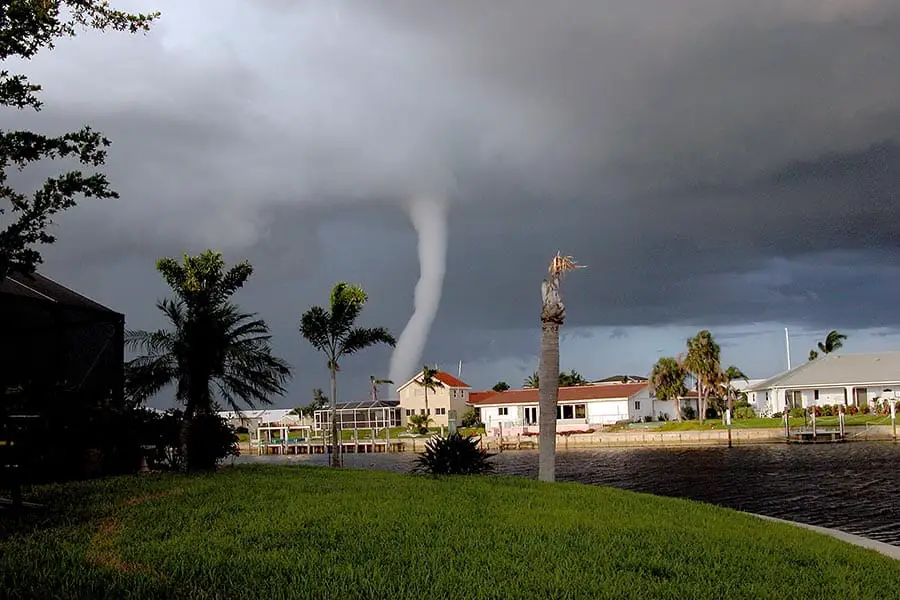
Is There a Tornado Season in Florida?
Tornado season in Florida mirrors storm season. Thunderstorms in the state generally begin developing in the late spring and continue throughout hurricane season. The months between May and November are considered hurricane season; tornado season is considered June through September.
However, spring weather sometimes brings cooler air from the jet stream into Florida. This cooler air can interact with typical weather and create the conditions for more significant storms and bigger tornadoes.
On April 4, 1966, a severe storm produced a massive tornado that reached F4 strengths as it plowed across the state. The Florida State University Climate Center reports that there is “strong evidence” that the storm moved all the way across Florida from the Gulf to the Atlantic.
Phenomenal Florida Fun Fact: While rare, it is possible for supercell storms to spawn twin tornadoes!
Other Posts of Interest
- Is Key Largo Cheaper Than Key West?
- Can You Find Sea Glass In Florida?
- Is Florida A Peninsula Or An Isthmus? (+Amazing Features)
- Does Florida Have Bayous?
What Month has the Most Tornadoes in Florida?
June is generally the month with the most tornadoes. Most of these storms are EF0 or EF1 tornadoes, which are relatively minor as tornadoes go. That said, even a small tornado can do a lot of damage, such as the March 31, 2011, EF-1 storm that caused significant damage at the Sun ‘n Fun airshow in Lakeland.
How are Tornadoes Rated?
The current system for rating tornadoes is the Enhanced Fujita Scale. This scale uses a variety of factors to determine the likely wind speeds on the ground in the tornado and then categorizes the storm based on those speeds. The scale begins with EF-0 tornadoes, which are estimated to have winds between 65 and 85 miles per hour, and goes all the way to EF-5 tornadoes, which have estimated wind speeds greater than 200 miles per hour.
| Enhanced Fujita Number | Wind Speeds (MPH) |
|---|---|
| EF-0 | 65-85 |
| EF-1 | 86-110 |
| EF-2 | 111-135 |
| EF-3 | 136-165 |
| EF-4 | 166-200 |
| EF-5 | > 200 |
Any tornado can be dangerous: even an EF-0 storm can cause damage to well-constructed homes and damage trees or other natural features. However, an EF-5 storm can literally wipe a neighborhood off the surface of the earth; cars, trucks, and even trains have been picked up and thrown more than a mile by massive and very intense tornadoes.
What is the Difference Between F-storms and EF-storms?
The Fujita scale for rating tornadoes was developed in 1971 at the University of Chicago by a meteorologist named Ted Fujita. His system of classifying tornadoes relied on a post-storm examination of the damage, which was then compared to damages caused by known wind conditions.
Heavier winds earn a tornado a higher ranking on the Fujita scale. As a result, these storms would be ranked as “F” storms: F1, F2, F3, and so on.
However, the Fujita scale was heavily reliant on educated guesses to assess damages. Over the intervening decades, scientists and engineers performed a great deal of research and ultimately released a new tornado ranking scale, the Enhanced Fujita scale. The Enhanced Fujita scale includes better assessment tools to help scientists determine the severity of the storm.
Because the Fujita scale existed for a long time before the Enhanced Fujita scale was released, many old storms are still referred to as “F” storms; newer storms will almost always be ranked with an “EF” designation.
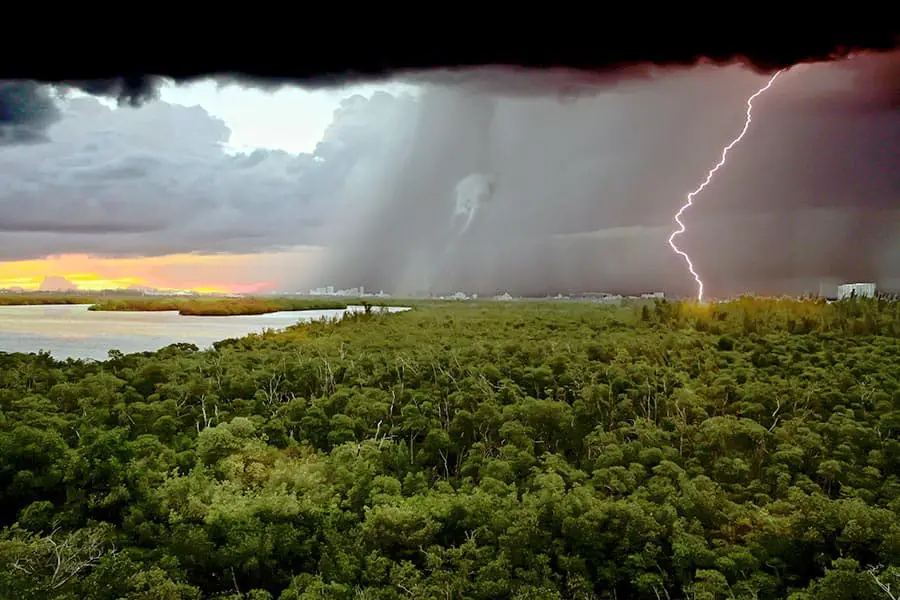
Does Florida Ever get EF5 Tornadoes?
Even though most Floridian tornadoes are small, does Florida ever get big storms like an EF-5 storm? Florida has been lucky enough to avoid developing many major tornadoes since reliable record-keeping began. The most significant recorded tornadoes in Florida history were both F4 storms: the previously mentioned storm of April 4, 1966, and another on April 15, 1958.
Does a Tornado Have an Eye?
In hurricanes, the “eye” is a calmer central portion of the storm around which the bigger storm rotates. So it may seem to make a lot of sense to imagine that tornadoes also have eyes since they are also rotating weather systems. This premise was also a key element in the famous movie Twister.
However, tornadoes do not have an eye. There are variations in the air movements inside the cone of the twister, but there is not a calm or docile eye like one would find in a hurricane.
Tornadoes are destructive enough that, to date, scientists have not been able to recover any instruments deployed into them: the twisters simply wreck any observational equipment unfortunate enough to get sucked inside them.
Which is Stronger: A Tornado or a Hurricane?
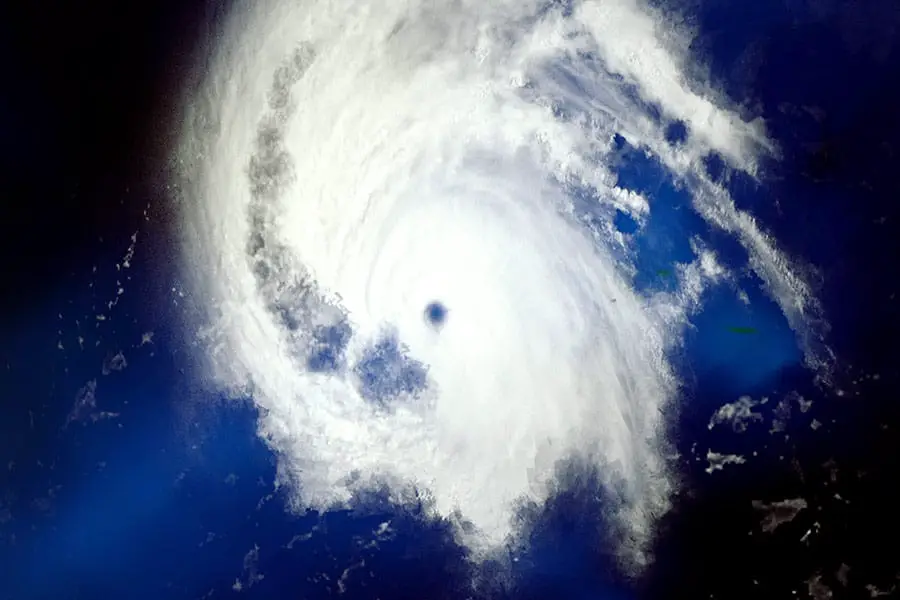
Tornadoes and hurricanes are both powerful meteorological phenomena, but overall, hurricanes are much stronger. Hurricanes develop over several days and can expend enormous amounts of energy as they grow. Severe hurricanes can bring torrential rains and extreme winds to an area for hours, potentially days. Tornadoes, while powerful in their own way, rarely last more than an hour.
Hurricanes also come with several days of advance warning, allowing people time to stock up on emergency supplies and prepare their property for the weather. Tornadoes rarely come with more than ten to fifteen minutes of notice, if that. Tornadoes are more startling and frightening for this reason, but hurricanes are definitely the stronger storm.
What is the Difference Between a Tornado Watch and a Tornado Warning?
A tornado watch means that conditions are favorable for the development of tornadoes. You should prepare for the worst: check your supplies, make sure you have a safe spot picked out in your house away from windows and other hazards, and monitor the weather. A tornado warning means that there is imminent danger and a tornado has been spotted on the ground: you should immediately take shelter in a low-level interior room away from windows.
The Aftermath
Tornadoes are dangerous and energetic weather events that can frighten even the hardiest Floridian. However, don’t let the fear of tornadoes worry you too much when you come to visit or while living here.
While they do happen, this is a state that is used to dealing with intermittent heavy weather, and our tornadoes rarely reach the destructive potential of those commonly found in Tornado Alley. In addition, the most common twisters you’ll find here are served up cold.
